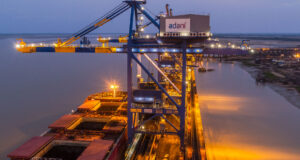Prof. Dr. P. K. Jena
The civilized world of today needs energy in various sectors like transport, industries, agriculture and domestic. At present, a large amount of energy in different parts of the world is derived for these purposes from fossil fuels causing a lot of environmental pollution and global warming due to release of poisonous gases like carbon dioxide, oxides of nitrogen and sulphur along with particulate matters. In view of various harmful effects caused due to these, all over the world efforts are being made to utilize clean and renewable energy from sources like biogas, wind, sun, small hydro power, nuclear and geothermal. In addition to this, due to rapid growth of industries, transport systems and other energy consuming sectors, electricity shortage has been found to be very common particularly in developing countries like India. At present, in India nearly 40% of the populations have no access to modern energy services. The electricity demand is expected to rise nearly 7.4% per year for the next 2 to 3 decades.
As there is a large potential of clean energy from sun, wind, biomass and small hydro power, all most all the countries in the world are trying to replace the fossil fuels by the renewable energy sources. In this processes, it has been found that, carbon dioxide emission can be reduced by 3.3 Million Tonnes (MT) per year by adding 1 Gega Watt (GW) energy of renewable origin in order to minimize the global warming problems. In view of this, efforts are being made to harness energy from wind in a much bigger way compared to other renewable energy sources because of its certain advantages over other forms of renewable energy. Wind power is the conversion of wind energy into a useful form of energy, such as using wind turbines to make electrical power, windmills for mechanical power, windpumps for water pumping or drainage, or sails to propel ships.
At present, the five main wind power producing countries are China, USA, Germany, Spain and India, and together share nearly 73% of the total global wind energy capacity of about 297000 MW.
The wind mill consists of a system of blades mounted on a tower which is rotated by the wind either to produce mechanical work directly or to use a generator where the mechanical energy is converted to electrical energy. This is called ‘Wind Turbine’. The rotor capacity of the wind turbine is the major potential to generate electricity in ideal wind conditions. Wind turbines being manufactured at present have capacity ratings ranging from 250 watts to 1.65 MW. For example, a 10-kilowatt (kW) turbine typically has a 7-meter rotor diameter; a utility-scale turbine with a 750-kW generating capacity operates with a rotor diameter of 44 meters and a 1.5 MW turbine operates with a 70 meter rotor diameter.
The technology and improvements in efficiency by using longer and stronger turbine blades from new advanced materials and design, it will be possible for the turbine to produce nearly 30 times as much power at a much lower cost.
Global scenario on Harnessing and Use of wind energy
All over the world various efforts are being made to harness wind power with the development of advance technology.
The renewable energy from wind is the fastest growing sector all over the world with an average annual growth of 25%. The installed capacity of wind energy generation has increased from 60 GW to 160 GW from year 2002 to 2010 and it was estimated to increase 460 GW by the end of 2015. At present, nearly 83 countries in the world are harnessing wind energy and supplying the power to electricity grid. In 2010, the wind production was 2.5% of the total electricity used in the world. A small country like Denmark is generating more than 25% of its electricity from wind power. The total global installed capacity of wind energy up to the middle of 2013 was 296,065 Mw.
It being very easy to harness energy from wind, in about 15 years the global installed capacity of the wind mill has increased to about 50 times within 1996 to 2012.
The global wind power installed is 238,351MW in the year 2011, an increase in total installed generating capacity of nearly 75% over the period of 2005–2011. Among the top 10 wind power producing countries in the world, the leading country is China with the installed capacity of 62,733 MW at the end of 2011, around 98% growth over the period of 2005–2011. The next highest wind power developing countries are France, Canada, USA and UK with the growth rate of around 88%, 87%, 80% and 79% respectively from the year 2005 to 2011.
Wind Energy Scenario in India
India is fast developing through utilization of its resources by applying modern science and technology. In this process, the electricity demand in the country is expected to rise by 7.4% annually for the next two and half decades. In view of limited supply of fossil fuels and their harmful effect on environment, it has been necessary to harness energy from various clean renewable sources including the wind power. The wind energy programme started in a systematic way in India by the end of 6th Five Year Plan (1983-1984) and during these years an appreciable amount of wind energy are being harnessed for different purposes though it is much behind many other countries in this regard. The main objective of the programme should be to commercialize wind energy production, support research and development, provide more help to wind energy projects and to create awareness among the people. The total installed wind power capacity in India had reached 17.9 GW in August 2012. The total capacity added during the financial year 2012-2013 was around 1,700 MW. Presently, India has an installed total power generation capacity of a little over 207.8 GW, of which renewables account for about 25 GW and wind is the major one of this installed capacity. In the recently released National Electricity Plan (2012), the Central Electricity Authority has projected the need for 350-360 GW of total generation capacity by 2022.
India has got long coastal line over 7500 Km with good potentiality of wind energy, but harnessing the wind resource has come up mostly in some parts of Gujarat and Tamilnadu. It is reported that, 119.5 billion units (BU) of electricity have been added to the total electricity supply from wind energy. In this process, the country has saved 89.72 million tonnes (MT) of coal and decreased the CO2 emission by 118.29 MT. This indicates the environmental and economic validity of wind power in India. Therefore, it is essential to harness wind energy in various possible ways both offshore and onshore areas of the country. The installed wind capacity of major states of India is given in as per the Indian wind atlas of 2010 prepared by the Centre for Wind Energy Technology (C-WET) and the potential has been calculated based on availability of 2% of total land for setting up wind energy turbines at a 50 meters height level. The major installed wind capacity of India is 28083 MW.
If the wind energy potential at a height of 50M is harnessed fully then it can provide only 8% of the electricity demand of the country in the year 2022 and 5% in 2032. However, at 80 metres height the projected wind potential for the same area of land used (2%) will be in the order of 1,02,788 MW whereas at 50m height, it is 49,130 MW.
There is a great scope on this planet to harness wind energy at different places and at different heights and it is also possible to locate wind power projects in areas away from the human habitation, forests, precious land space etc. Wind energy being a clean one it has got a lot of benefits in minimizing the release of green house gases and mitigating global warming. By using modern technology it is possible to harness wind energy with a competitive price with that generated from fossil fuel. The modern wind turbine has many advantages and it is modular and easy to install according to electricity supply and demand. Further, harnessing wind power, the system is less capital intensive and simple in construction and easy to maintain and operate. At present, with advance technologies by using longer and stronger turbine blades made from advance materials and design, it has been possible for the turbine to produce power much more efficiently.
 Odisha news today, Latest Oriya News Bhubaneswar Online Odia news Portal
Odisha news today, Latest Oriya News Bhubaneswar Online Odia news Portal




